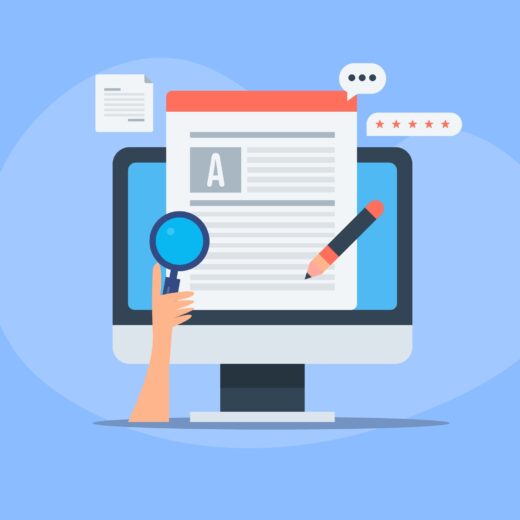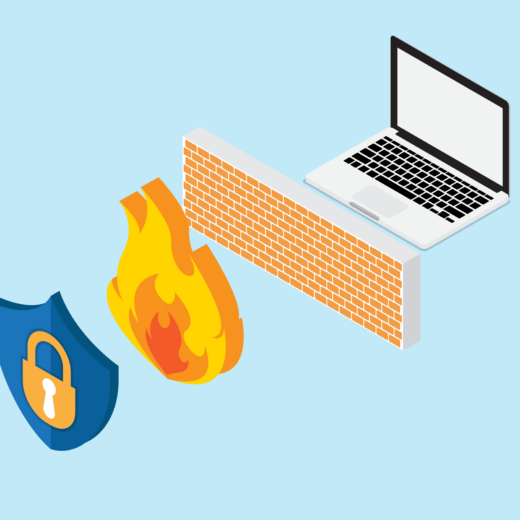20 Common Digital Marketing Problems (and Solutions)

Digital marketing is a fantastic way to reach a huge audience with much lower set up and maintenance costs than ‘traditional’ media. That said, there are still a lot of challenges to overcome, and businesses often have the same issues when it comes to increasing engagement and conversions online. That’s why we’ve put together 20 commonly asked questions and simple solutions so that you can move forwards in the new year.
Just click on your problem to jump to the right section, or scroll through to find new solutions to your digital marketing issues.
- How to stop people from abandoning their shopping charts
- How to increase your social traffic
- How to reduce your bounce rate
- How do deal with time issues when it comes to digital marketing
- Getting ROI figures for your digital marketing campaign
- How to make the most of a small PPC budget
- How to improve your reach on Facebook
- How to think of things to tweet about
- How to improve your email click through rates
- How to appear in local search
- How to reduce your mobile bounce rate
- How to deal with a slow website
- How to get traffic from local SEO
- How to increase social conversions
- How to reduce the bounce rate on your blog
- How to gain traffic from your blog
- What to do when you’re running out of ideas for your blog posts
- How to increase your social engagement
- How to increase your conversion rate
- How to rank in a competitive industry
1. How do I stop people from abandoning their shopping carts?
We put all of our efforts into making products look appealing, making the website work smoothly, and ensuring that users have an excellent experience but 68% still abandon their shopping carts. That’s a huge number, but luckily we can make a big impact on conversion rates by concentrating on improving this figure rather than bounce rates and traffic numbers.
What’s the solution?
Make it as easy as possible for people to continue. That means removing unnecessary information from your sign up form, adding on as many different payment methods as possible, and offering to save their data for next time. We’re all lazy online, and adding paypal to your approved payment methods so that your customer doesn’t need to go and get their credit card could be the difference between a sale and an abandoned cart.
2. How do I get more social traffic?
We talk about fans, shares, and engagement, but ultimately businesses want their social media efforts to result in traffic and conversions. If you have plenty of the former, but none of the latter, you need to start referring followers to your site. The average order value for a social media conversion is £59 (and growing), so your business could be missing out on a lot of revenue if you don’t manage to convert social followers.
What’s the solution?
Link back to your site – so many businesses forget to do this! Make sure that your followers know about your new products and latest offers, and don’t be afraid to ask for the sale.
3. How can I reduce my bounce rate?
The average bounce rate is 40-60%, meaning that around half of your web visitors probably leave your site straight after entering. Improving this figure is far easier than trying to get a lot of new traffic (and losing half of them through bounces), so if you can find any areas to improve it’s definitely worth doing it.
What’s the solution?
A high bounce rate doesn’t have a single solution; it could be your site speed, your design, or even your main traffic sources. For example, if you do a lot of PPC and your ads misrepresent what’s on your site, you will get a high bounce rate. To improve it, you need to measure your site speed and look at your entrance pages, as well as traffic sources, to find the pages and traffic types with the highest bounce rates and draw conclusions from those.
4. What should I do if I don’t have time for digital marketing?
Digital marketing budgets are set to rise by 8% in 2015, and 71% of businesses plan to increase their budgets in the next year. Digital marketing offers higher conversion rates and lower lead costs than any other form of marketing, so it’s a mistake to neglect it entirely.
What’s the solution?
‘Digital marketing’ covers a huge number of disciplines, including PPC, SEO, social media, and email marketing. Choosing the right type of digital marketing for you can cut down on the time you need and make sure that you have the best chance of success. If your company really doesn’t have the time or expertise to maintain your digital marketing campaigns, it’s best to outsource. This means that your team is free to manage the rest of your business but you still benefit from a solid online presence.
5. How do I get ROI figures for my digital campaigns?
41% of companies have no ROI figures for their social media efforts, even though it’s relatively simple to look into your social traffic and conversions using free tools such as Google Analytics. Looking at your digital marketing KPIs is essential to keeping your campaigns on track and can be helpful when it comes to justifying increased budgets or new experiments.
What’s the solution?
Digital marketing agencies can set up ROI reports to let you know how well your site and marketing efforts are working. Alternatively, you can look at your traffic, conversions, top landing pages, and various other metrics using a range of free services. It’s important to decide what your KPIs will be when still creating your strategy so you have set metrics to track on a regular basis.
6. How can I make the most of a small PPC budget?
On average, the top 3 paid ads in Google get 41% of the clicks for that term – that’s why you always need to make sure that your bids are competitive. However, most small businesses don’t have huge PPC budgets to maintain good positions all day, every day. That’s why you need to budget intelligently.
What’s the solution?
As a business, it’s likely that you have a quarterly or annual budget set for your PPC. Rather than stretching that over 365 days, advertise in short bursts where that same figure only needs to last for 30 days through the entire year, but you will get far more clicks and more conversions within that time.
It’s always worth experimenting with alternative advertising platforms and networks, rather than sticking to Google Adwords. Twitter advertising, for example, offers a much cheaper cost per click and allows you to target key groups based on their following behaviour. Likewise, Instagram and Snapchat are set to start advertising in 2015, which offers access to a younger and more visual audience.
7. How do I increase my reach on Facebook?
The average Facebook post now only reaches 16% of its followers due to a recent algorithm change. It’s no secret that Facebook wants to make money from advertising, so it’s time that we started treating the platform as a premium business service rather than a free profile.
What’s the solution?
Facebook offers to ‘boost’ your posts or set up adverts for your page – if you would like to increase your engagement and reach on the platform, it would be a good idea to start using this option. Many business owner balk at the idea of paying for exposure on a previously free platform, but it’s still an extremely valuable social network so the investment is worth it. You don’t need to pay for every post, but if you have an event you’d like to fill or a special offer you’d like to promote, try giving it a little push.
You can also increase your reach by encouraging users to interact with your content – the more they share, like, or comment, the more content they’ll see from your page. Politely explaining that on your posts can help engage users and inform them how Facebook actually works.
8. How do I think of things to Tweet about?
Creating 140-character messages to send out on a daily basis can be surprisingly difficult. Even finding the right pictures and videos can take time and effort, but don’t give up – Tweets that include images get 86% more retweets than text-only tweets. It’s essential that you keep your Twitter feed updated and informative, you just need the right framework to keep going.
What’s the solution?
Every social media strategy should be built on the back of a good content strategy – that means that you always have deeper, more valuable content to link to and plenty of ideas for updates each week. Once you have your content framework and schedule, you won’t need to think of ideas from scratch every day.
It’s also worth remembering that 42% of Twitter users follow businesses to find out more about products and services – keep that in mind and keep your followers informed.
9. How do I improve my email marketing click through rate?
The average CTR for business emails is 3.5% – of course, that depends on your segmentation and list quality. Before you start email marketing, it’s essential that you have consent to send people messages and you comply with CAN-SPAM legislation. Once you have everything ready, it’s just a matter of honing and improving your approach to reach as many people as possible.
What’s the solution?
A low CTR with a high open rate often means that your messages aren’t relevant or there are too many conflicting CTAs. Pare down the calls to action to a bare minimum so that people aren’t overwhelmed and then figure out who would find the information most valuable. The key to a well-performing email campaign is segmentation; only send your message to the people who want it and make your value proposition clear.
10. How to I improve my local rankings?
Did you know that the #1 result on Google gets 33% of the traffic for that search term. That means being at the first position for your service and location could have a huge impact on your business.
What’s the solution?
Using Google Plus and Places for Business (which are essentially the same thing now) will do wonders for your local SEO – make sure that everything is filled out in full and your location marker is in the right place (in case people use Google Maps to find you). You can also set up a specific local landing page to provide further information and possibly put on offers for people living nearby. It’s a great way to get repeat business and become the ‘go to’ provider for locals.
11. How can I reduce my mobile bounce rate?
Bounce rates are almost 10% higher on mobiles than desktops. Reasons range from ‘on the go’ behaviour, interruptions, to poor 3/4g/wifi signal and slow load times. While this is the norm, you need to make sure that you’re catering to mobile users and offering the best possible experience to people using tablets or phones to access your site.
What’s the solution?
‘Optimised’ could just mean that your provider has used a responsive template, but the coding is still messy and the images are still far too large. The first step to reducing your mobile bounce rate is checking your mobile load speeds and looking at how user friendly your mobile version really is. You can look at user journey and popular entry pages to find out what people are really looking for when they visit your site on mobile, and make sure that you make it as easy as possible to access popular information. This could mean that you have totally different menus on mobile and desktop versions of your site.
If people are trying to buy online but your site doesn’t offer the best experience, it may be worth building an app to cater to their needs in a more convenient format.
12. How do I deal with a slow website?
47% of consumers expect your website to load in 2 seconds or less – if you don’t meet that expectations, they’ll just go back to the search results and find a competitor who performs better.
What’s the solution?
The solution depends on the reason for your slow site – it could be that your hosting package isn’t big enough for your needs, or it could be the way that the site has been built. Run your site through a tool like Google’s Page Speed Checker to find out how it rates and what the issues are. You may need to compress your images, minify CSS, or prioritise visible content to make your pages load faster.
13. How do I get web traffic from my local area?
This is quite common in the age of search engines and social media – your content could be getting shared abroad when you only offer services in the UK (or in a particular region in the UK). Since 50% of consumers visit a physical shop within a day of a local search, it’s essential that you stay on top of local search results.
What’s the solution?
You can’t stop people from elsewhere from accessing your site – even though they’re not your customers, their links can help you climb up the rankings and their shares could reach someone closer to home. Improving your local search will mean that a larger proportion of traffic comes from your service area, and it means that when people are specifically looking for you they will find you in the right region. Check out this answer to find out more about improving local search.
14. How do I start getting social conversions?
Social media conversion rates are 13% than conversions from other leads, but some businesses have real problems turning likes into revenue.
What’s the solution?
Most people follow business pages to get the latest offers and information about new products, so make sure that you’re providing it. While constant sales messages can be annoying, don’t be too shy about adding CTAs and time-sensitive offers to your page when you want to encourage more conversions. Every time you feature a product, make sure that you link through to that page rather than your general home page so people don’t need to look for the product, and if you’re running low let people know – last chance offers are surprisingly effective, especially when the price has been reduced.
15. How do I reduce the bounce rate on my blog?
Companies with blogs generate 67% more leads than those without, but if your blog bounce rate is higher than the rest of your site you’re going to have trouble converting that traffic. Luckily, there are some easy fixes to keep that traffic on your site and push them towards enquiring or buying.
What’s the solution?
Bounce rates are actually quite misleading – people can bounce from your page because it’s not what they were looking for, or they can bounce because they’ve found exactly what they were looking for and are satisfied. Unfortunately, the result is largely the same – the difference is that the latter is far more likely to interact with your brand later on and buy.
Either way, there are measures that you can take to keep people engaged with your blog posts. One of the simplest is to improve your internal linking with subject links and contextual linking to guide people through the site if they need more information. Contextual links are links in the body of the text; for example, if I was talking about social media, I may want to link to the relevant page on our site. That’s a contextual link. Add these in if you mention something you’ve previously posted about or if you mention a product – that guides people to information and subtly pushes them towards a purchase.
It’s likely that your blog posts are grouped by category and tags – providing readers with other similar articles at the bottom of your post can help them explore your content further without having to make drastic updates to your blog structure.
16. How do I start getting traffic from my blog?
Once a you write 21-54 blog posts, blog traffic generation increases by up to 30%. However, it’s not just a case of quantity – your blog posts need to be valuable and on-topic if you want to generate quality traffic.
What’s the solution?
If you’ve just started blogging, it may be too soon to see any real results – realistically you should blog consistently for 4-6 months before assessing the impact and expecting to see good links and traffic based on your posts. Once a post has been written, you should distribute it via your social media and see whether there are any other natural linking opportunities available.
If you’ve been doing this for a while, the traffic issues could be a reflection of your topic or the quality of the content. Needless to say, blogging for the sake of it without offering any useful or entertaining information won’t improve your traffic or conversions. Likewise, if you have excellent content but it just hasn’t been optimised and your keywords are missing from titles, you could be missing a lot of opportunities. Running a quick SEO audit on your blog alone will help to identify the problem.
17. How do I think of ideas for my blog posts?
Small businesses can double their sales leads by increasing blog post frequency – it’s an excellent way to gain more links, more leads, and more traffic. But it can be difficult to maintain an active blog for months and years at a time. That’s why your business needs a sound strategy and structure to keep your writers going when they’re feeling uninspired.
What’s the solution?
Most businesses have a calendar, even if it’s a very loose one. Putting together a content calendar with weekly ideas, monthly themes, or regular events to post about means that you don’t need to think of ideas from scratch every time you sit down to post. It can take a while to put it together, but it’s an extremely valuable aid, particularly over busy periods when you may not have as much time to research.
Another great way to generate ideas is to set up a Google Alert for your industry and related topics – that way, you get the latest news and interesting information in your inbox every morning without having to search for it.
18. How do I start engaging with my social followers?
Social media isn’t just way to broadcast – it’s a great way to start conversations with your customers and build a stronger bond with them. Unfortunately, most businesses don’t get to that stage.
What’s the solution?
If you don’t have enough followers, your main focus should be on posting interesting and useful content to build your customer base so that there are enough people to engage and converse with. If you have reached that point, it’s time to start conversations. It can be tricky, but simply asking questions and asking for engagement is the easiest way to start the discussion. You may want to get other people in the company to use their own accounts to keep the conversation going to start with, so that your followers can see it’s a safe and easy place to engage.
19. How do I increase my conversion rate?
Average conversion rates range from 1 to 4%, depending on industry and site quality. Anything within that range is considered normal, but every business wants to improve their conversion rate and ultimately increase their revenue.
What’s the solution?
The key to conversions is to make them as easy as possible. Shopping malls have been designed to make shopping as easy and thoughtless as possible, down to safe flooring, temperature controls, and regular food outlets so that people don’t need to think about practicalities. Your website needs to offer the same sort of experience, but online. CTAs should be clear, shopping carts need to be easy to use, you need to ask for the bare minimum information to complete the transaction, and offer a wide range of payment options.
Online shopping is the norm for the majority of consumers in the UK, and the only way to compete with the likes of EBay, Amazon, and ASOS is to offer a similar buying experience so that customers are reassured by the familiarity and high standards. This means clear photographs, easily accessible returns information, and ideally free P&P (if your business can afford it).
Removing as many barriers as possible will reduce cart abandonment and ensure that more people complete the process.
20. How can I improve my rankings in a competitive industry?
SEO is like many other things – you only get out what you can put in. Unfortunately, that can mean that thousands of businesses are competing for the same 10 spots on the first page of Google – businesses that have larger budgets and in-house SEO teams who can easily put in the time and money to gain a foothold on the first 3 positions.
What’s the solution?
There are a lot of ways to deal with this; in some industries, it’s a case of finding a work around rather than competing for a very short phrase. Remember that short-tail phrases have very low conversion rates – if you sell shoes, it’s highly unlikely that ranking at #1 worldwide for ‘shoes’ will actually help your business because most people completing that search aren’t looking to buy your handmade suede men’s loafers. Longtail keywords offer much higher conversion rates and better search positions – the best part is, people who come to your site are further down the sales funnel and specifically looking for your products.
Another way to gain good search positions when you don’t have the same budget or resources as your competitors is to look at alternative ways of ranking. For example, YouTube is now the second largest search engine in the world – bigger than Bing, Yahoo, Ask, and AOL combined. Using video marketing can help you rank in YouTube, which is also owned by Google so you’ll rank on the ‘videos’ part of the results too.
These are just two ways to get organic traffic from search results – there are many more. The best solution to this is to speak to an SEO specialist who will review your site and your budget to find a solution.






